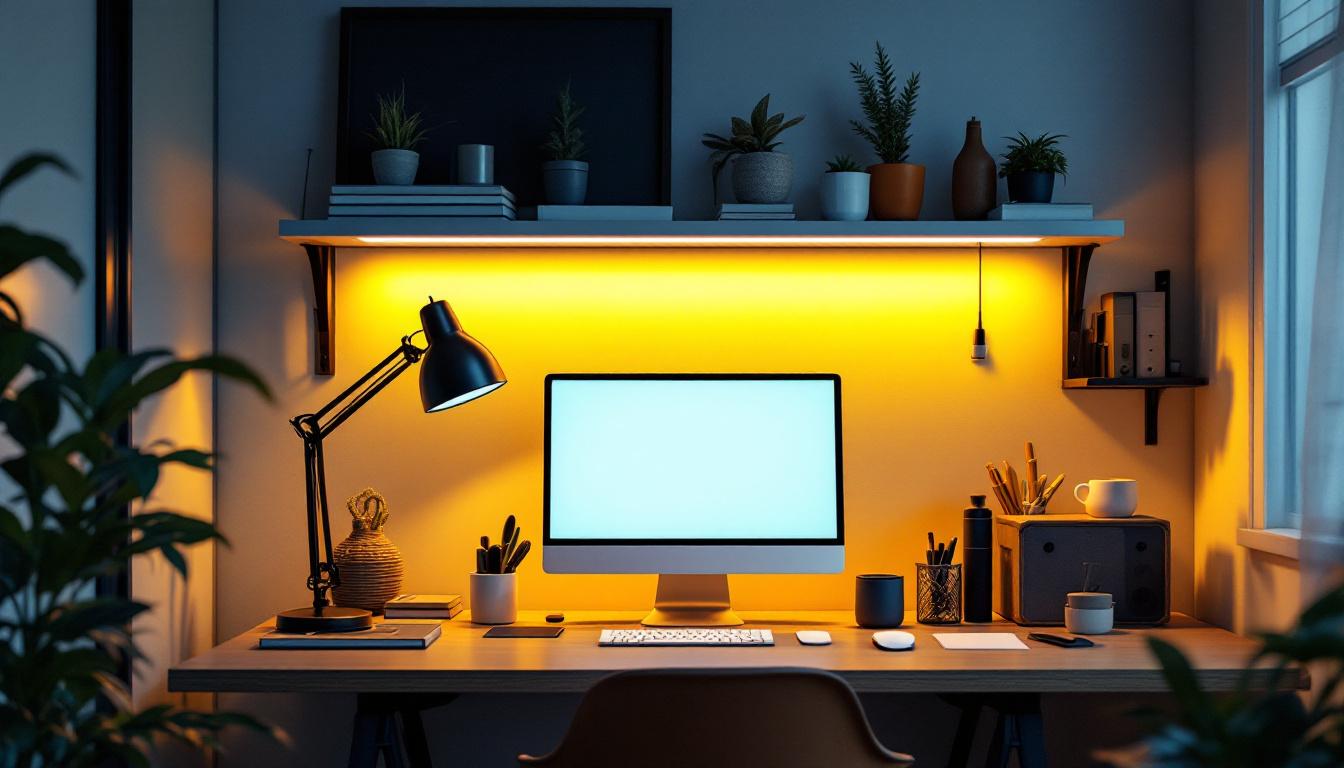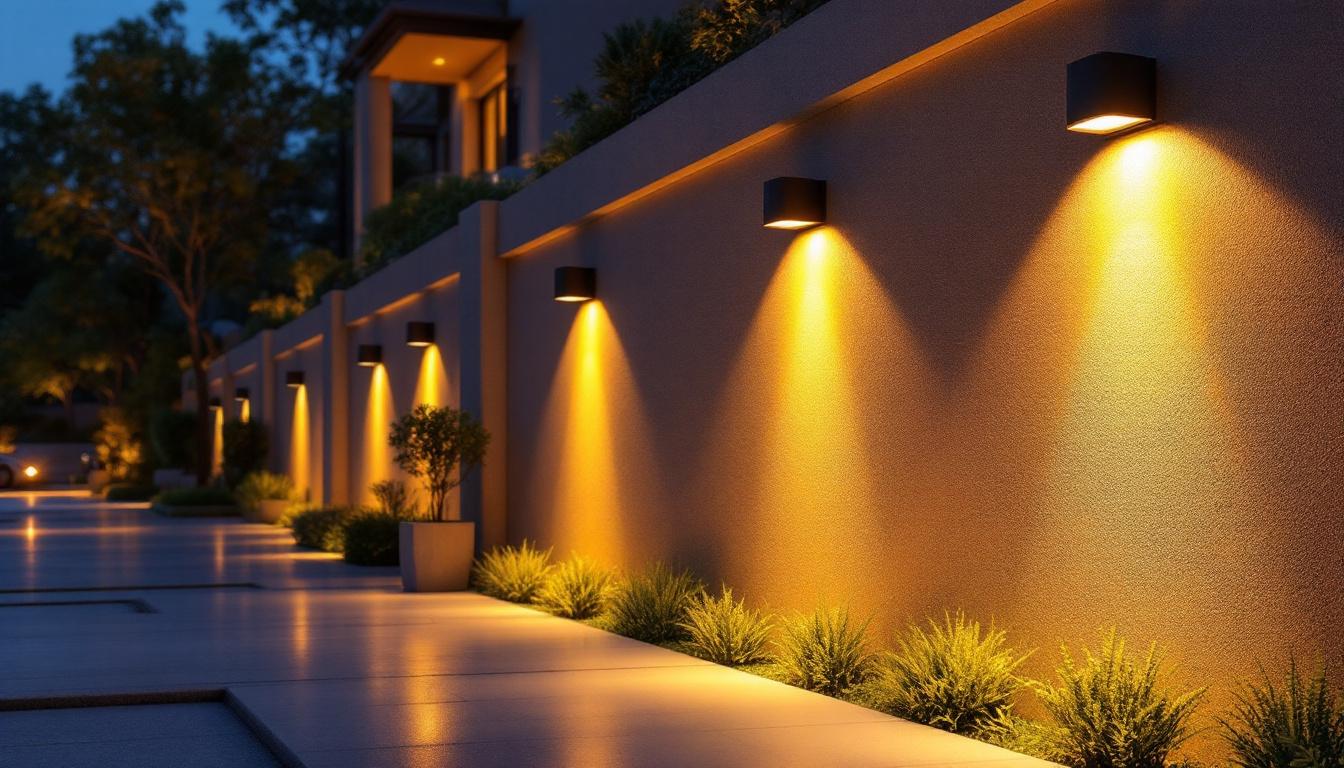
Under cabinet desk lighting is no longer just a nice-to-have feature in kitchens, workshops, or home offices. It’s become essential for creating functional, visually appealing, and safe workspaces. For lighting contractors, understanding the nuances of these lighting solutions can set you apart in a competitive market. Clients expect not only illumination but also energy efficiency, longevity, and seamless integration with their existing décor and electrical systems.
Consider the typical kitchen or workspace scenario: overhead lighting often casts shadows on the work surface, making tasks like chopping, reading, or detailed handiwork difficult. Under cabinet lighting eliminates these shadows by positioning light exactly where it’s needed. This direct illumination enhances productivity and reduces eye strain, which is critical for both residential and commercial projects.
Moreover, the variety of under cabinet lighting options available today allows for customization to fit any aesthetic or functional requirement. From LED strips that offer a sleek, modern look to puck lights that provide a more traditional feel, the choices are abundant. Additionally, many of these fixtures come with dimming capabilities, allowing users to adjust the brightness according to their needs or mood. This versatility not only enhances the overall ambiance of the space but also contributes to energy savings, as users can optimize their lighting based on the time of day or specific tasks at hand.
From a contractor’s perspective, knowing the right products, installation techniques, and troubleshooting methods is key to delivering a quality job that satisfies clients and minimizes callbacks. Familiarity with the latest technologies, such as smart lighting systems that can be controlled via mobile apps or voice commands, can also elevate your service offerings. Clients are increasingly looking for solutions that integrate seamlessly with their smart home ecosystems, and being able to provide this knowledge can position you as a forward-thinking contractor in a rapidly evolving market. Understanding the electrical requirements and ensuring proper installation not only guarantees safety but also enhances the longevity of the lighting solutions you provide.
LED strip lights have become the go-to option for under cabinet lighting. They offer a sleek profile, energy efficiency, and long lifespan. These flexible strips can be cut to size, making them adaptable to various cabinet lengths and shapes. LEDs also generate minimal heat, which is safer for enclosed spaces.
One of the biggest advantages of LED strips is their color temperature versatility. From warm white (2700K) to daylight (5000K), contractors can tailor the lighting ambiance to client preferences. Additionally, many LED strips are dimmable and compatible with smart home systems, adding another layer of customization.
Moreover, LED strips can be easily installed with adhesive backing, making them a favorite among DIY enthusiasts. They are also available in various brightness levels and colors, allowing homeowners to create unique lighting schemes that reflect their personal style. With the rise of smart technology, some LED strips can even be controlled via smartphone apps, enabling users to adjust brightness and color settings from anywhere in the home. This level of convenience and flexibility is driving the popularity of LED strips in modern kitchen designs.
While less common than LEDs, fluorescent under cabinet fixtures remain in use, especially in commercial settings or where budget constraints exist. They provide bright, even light but come with drawbacks such as a shorter lifespan, higher energy consumption, and a bulkier profile.
Fluorescent lights may require additional components like ballasts, which can complicate installation and maintenance. For contractors, it’s important to weigh these factors against client needs and project specifications before recommending fluorescent options. In addition, the color rendering index (CRI) of fluorescent lights is often lower than that of LEDs, which can affect how colors appear in the kitchen. This is particularly crucial in spaces where food preparation occurs, as accurate color representation can enhance the cooking experience and help in selecting fresh ingredients.
Puck lights are small, circular fixtures that offer focused pools of light. They’re ideal for accentuating specific areas or objects, such as decorative backsplashes or display shelves. While they don’t provide as broad illumination as strips or fluorescents, puck lights add design flair and can be combined with other lighting types for layered effects.
Installation of puck lights often involves drilling holes into the cabinet underside, so contractors should assess cabinet material and structural integrity before proceeding. Additionally, puck lights are available in various finishes, including chrome, brushed nickel, and matte black, allowing them to seamlessly blend with different kitchen styles. Their compact size makes them perfect for tight spaces, and when strategically placed, they can create dramatic shadows and highlights that enhance the overall aesthetic of the kitchen. Furthermore, some puck lights come with adjustable brightness settings, providing versatility for different tasks, from cooking to entertaining.
Effective under cabinet lighting starts with a well-thought-out plan. Contractors should measure cabinet lengths accurately and consider the placement of outlets, switches, and power supplies. Lighting should be evenly spaced to avoid dark spots or overly bright zones.
It’s also crucial to coordinate with other trades, such as cabinetry installers and electricians, to ensure wiring and mounting points are accessible and compliant with electrical codes. Pre-installation discussions can prevent costly adjustments later. This collaborative approach not only streamlines the installation process but also enhances the overall aesthetic and functionality of the kitchen or workspace. By involving all parties early on, contractors can address potential challenges related to design choices, such as the height of the cabinets or the thickness of the countertop, which could impact lighting effectiveness.
Under cabinet lighting typically runs on low voltage (12V or 24V) to enhance safety and energy efficiency. This requires a transformer or driver to convert standard line voltage. Lighting contractors must select the correct transformer capacity based on the total wattage of the lighting system.
Wiring should be discreetly routed through cabinet interiors or walls to maintain aesthetics. Using flexible, UL-listed cables designed for low-voltage lighting is recommended. Additionally, contractors should ensure all connections are secure and protected from moisture, especially in kitchen environments. It’s also beneficial to consider the future needs of the space; incorporating dimmers or smart controls can allow homeowners to adjust lighting levels based on activity, creating a versatile environment. Furthermore, understanding local electrical codes and regulations is essential to avoid any compliance issues that could arise during inspections.
Mounting options vary depending on the lighting type and cabinet design. LED strips often come with adhesive backing for easy installation but may require additional clips or brackets for long-term security. Puck lights and fluorescent fixtures usually need screws or mounting brackets.
Contractors should avoid mounting lights too close to the cabinet front edge to reduce glare and ensure light is directed onto the work surface. Testing placement before final attachment can help optimize lighting angles. Additionally, it’s important to consider the heat output of the fixtures; proper ventilation can prevent overheating and prolong the lifespan of the lighting system. Using adjustable mounts can also provide flexibility, allowing for minor adjustments post-installation to achieve the desired lighting effect. As trends in kitchen design evolve, incorporating stylish fixtures that complement the cabinetry can enhance the overall look while providing functional illumination.
Color temperature influences the mood and functionality of a space. Warmer tones (2700K–3000K) create cozy atmospheres, ideal for residential kitchens or reading nooks. Cooler temperatures (4000K–5000K) provide crisp, bright light suited for task-heavy areas like workshops or offices.
Color Rendering Index (CRI) measures how accurately a light source reveals colors compared to natural light. A CRI of 80 or above is generally recommended for under cabinet lighting to ensure vibrant and true-to-life colors, which is particularly important in kitchens where food presentation matters.
Many clients appreciate the ability to adjust under cabinet lighting intensity. Dimmable fixtures enhance versatility and energy savings. Lighting contractors should verify compatibility between dimmers and LED drivers to avoid flickering or reduced lifespan.
Smart controls are gaining popularity, allowing users to control lighting via apps, voice commands, or automation schedules. Integrating these systems requires familiarity with protocols like Zigbee, Z-Wave, or Wi-Fi, and may involve additional setup steps.
Although LEDs produce less heat than traditional bulbs, improper installation in confined cabinet spaces can still cause heat buildup, potentially shortening fixture lifespan. Contractors should ensure adequate ventilation and avoid placing lights near heat-sensitive materials.
Flickering lights are a common complaint and usually stem from incompatible dimmers or poor wiring connections. Using high-quality drivers and dimmers designed for LED lighting minimizes this risk. Proper grounding and cable management also reduce electrical noise that can affect lighting performance.
In kitchens, under cabinet lighting is exposed to humidity, steam, and occasional splashes. Selecting fixtures with appropriate IP ratings (usually IP44 or higher) helps protect against moisture ingress. Sealing connections and using waterproof cables further enhance durability.
Lighting contractors who master under cabinet desk lighting installation can offer clients tailored solutions that improve everyday living and working environments. Demonstrating expertise in product selection, installation best practices, and troubleshooting builds trust and encourages referrals.
Offering value-added services such as lighting design consultations, integration with smart home systems, and maintenance plans can differentiate your business. Staying current with emerging technologies and industry standards ensures you provide cutting-edge solutions that meet evolving client expectations.
Ultimately, under cabinet desk lighting is more than just a fixture-it’s a critical component of modern interior lighting design. Contractors who understand its complexities and deliver flawless installations will thrive in this niche market.
Ready to elevate your under cabinet desk lighting installations to new heights of efficiency and style? Look no further than LumenWholesale for a comprehensive range of spec-grade lighting products that promise quality and affordability. As a dedicated partner to lighting contractors, we offer the best value in wholesale lighting, ensuring you have access to premium products without the premium price tag. With our commitment to free shipping and bulk buying convenience, LumenWholesale is your go-to source for lighting that meets the highest industry standards. Don’t let middleman markups dim your project’s potential. Discover the best wholesale lighting value today and shine a light on excellence with LumenWholesale.

Discover the essentials of top-rated recessed lighting with our comprehensive guide tailored for lighting contractors.

Discover top LED outdoor wall lighting ideas from expert contractors to enhance your outdoor spaces.

Discover essential insights for lighting contractors in our comprehensive guide to wall sconces.

Explore the transformative impact of the 110/130 voltage standard in modern lighting solutions, uncovering its benefits for energy efficiency, sustainability, and innovation in contemporary design.